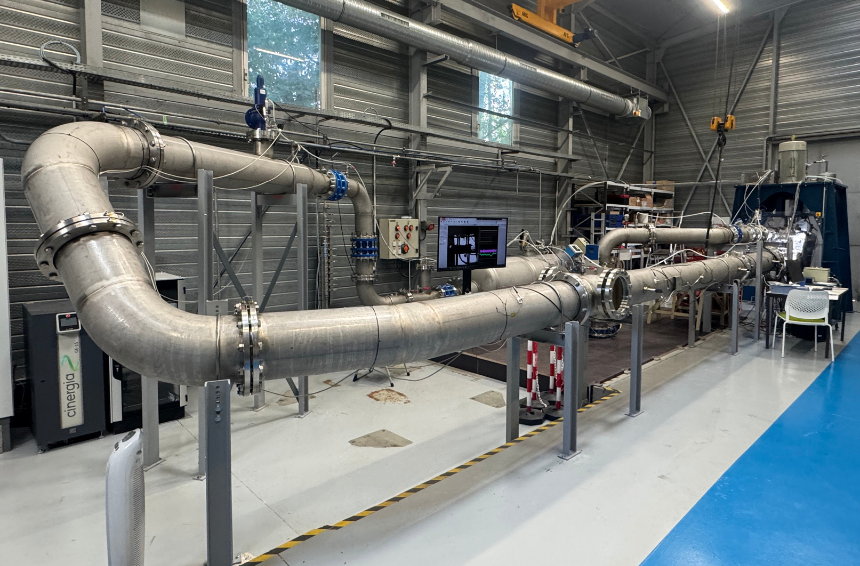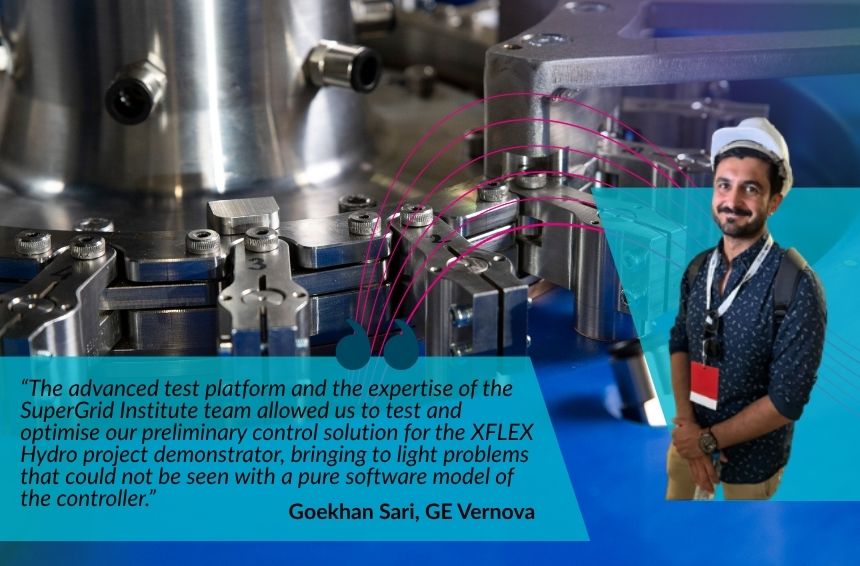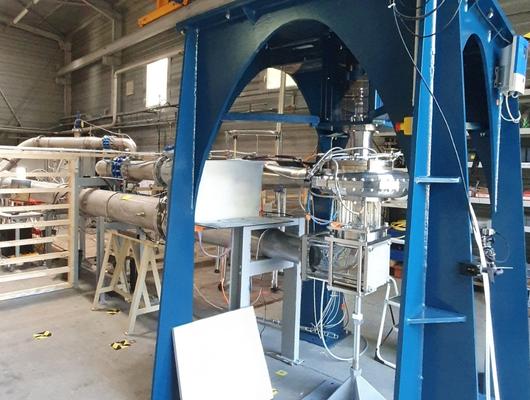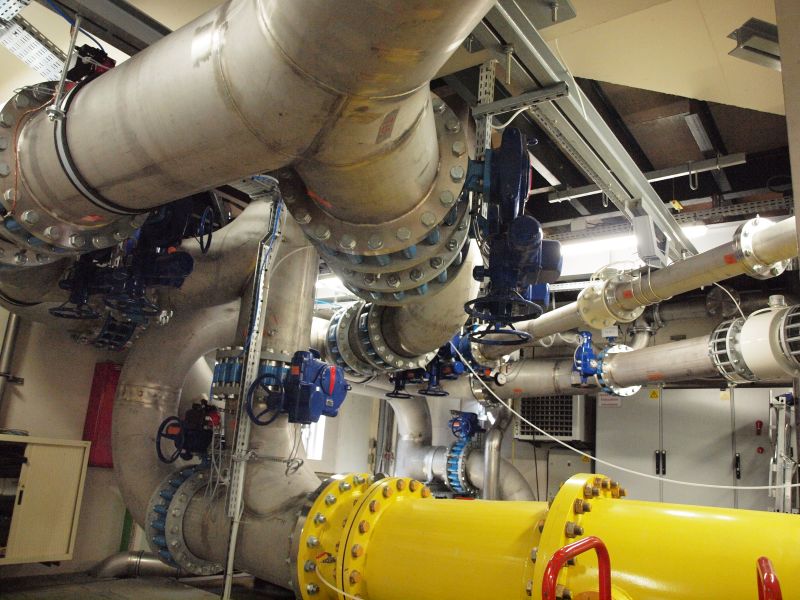HydroPHIL: real-time & transient testing
Enhance your hydro turbine’s dynamics & efficiency
The HydroPHIL platform is a unique test rig that can replicate the behaviour of various aspects of your hydro power plant in real time.
Our platform enables you to validate the control, supervision, system architecture, integration and hydraulic performance of your projects in a relevant environment.
It is the perfect tool for optimising and hybridising your pumped storage power plants.
Transient hydraulic phenomena
Transient hydraulic phenomena
When planning a new project or refurbishing a power plant, it is essential to anticipate transient phenomena such as turbine rewatering, water column separation, cavitation, water hammer, etc.
Thanks to our unique test rig we can confirm numerical simulation by relevant experiments.
Investigate water column separation for Andritz

This occurs when a valve closes too quickly, creating a vacuum in the pipe. The water then crashes back together, causing a water hammer, a sudden and powerful pressure surge. Our client wanted to improve their understanding of this phenomena and update their Computational Fluid Dynamics data.


How HydroPHIL helps our client
As part of the European XFLEX Hydro project, GE Vernova aimed to study and validate the use of speed variation in turbine mode, with the goal of extending the turbine’s operating range under this mode.
As a member of the XFLEX Hydro consortium, SuperGrid Institute assessed the feasibility and relevance of these new operating sequences on our real-time HydroPHIL platform. We defined the test plan and configured the platform to match the characteristics of the test site, taking into account everything from the turbine itself to its connection with the power grid.
Safer integration of flexible solutions
Increasing the flexibility of your assets sometimes requires new technologies such as variable speed, hybridisation and advanced control strategies. These solutions can improve response times and increase the operating range or the system’s life expectancy.
Our innovative HydroPHIL test platform helps you to mitigate the risks of implementing new flexibility solutions. It performs real-time simulations of these emerging hydro power storage technologies, the first of its kind.
Focus on the advantages of variable speed
To integrate more wind and solar power into the grid, it is essential to harness the flexibility of hydraulic assets. One way to achieve this is to vary pump power by controlling turbine rotation speed, which is made possible by installing a variable frequency drive.
Variable speed technology is not new. It has already been successfully adopted by several companies around the world — for example at Linthal and Nant de Drance in Switzerland, as well as in Germany, China, and India.
So, what are the benefits? Variable speed improves operational flexibility, particularly for pumping, and helps to prevent cavitation issues that can arise in extreme hydraulic conditions. This not only enhances overall performance but also contributes to the long-term reliability of hydroelectric systems.

Our references

Understanding
water column separation

Improving
hydropower flexibility

New generations
of batteries




